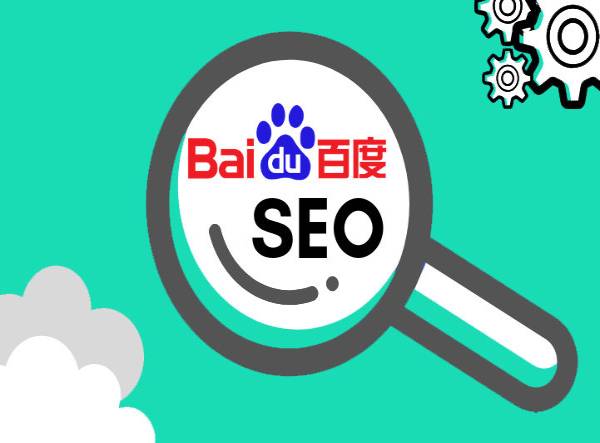Overview of SEO | SEO tutorial
This is an SEO tutorial. What is SEO? Friends who are accustomed to using search engines will naturally enter the keyword “SEO” on Baidu (http://Baidu.com), Google (http://Google.cn), Yahoo (http://Yahoo.com) , Friends who are accustomed to using English search will search on relevant English search engines.By using these search engines, you will get web page results related to the keyword SEO. By viewing these web pages, you will usually understand that SEO is What’s the meaning? You will have a general understanding of SEO.
SEO is the abbreviation of Search Engine Optimization, and related search knowledge includes Search Engine Positioning (search engine positioning) and Search Engine Ranking (search engine ranking).
The main job of SEO is to optimize web pages by understanding how various search engines crawl Internet pages, how to index them, and how to determine their ranking of search results for a specific keyword, so as to improve the search engine performance. Ranking, thereby increasing the number of website visits, and ultimately improving the sales ability or publicity ability of the website.
Search engine optimization is such a technology, that is, following the scientific and comprehensive theoretical mechanism of search engines, reasonable planning and deployment of website structure, web page text language and interactive diplomatic strategies between sites, etc., to explore the maximum potential of the website and make it more popular in the world. Search engines have a strong natural ranking competitive advantage, which plays a role in promoting online sales of enterprises and strengthening online brands.
To put it simply, SEO is an online marketing method that allows websites to get better rankings in search engines such as Baidu, Google, Yahoo, etc., so as to win more potential customers, and it is also a method of SEM (Search Engine Marketing).
On the basis of the SEO tutorial. , to be a good seo, you must have good content.
The basic concept of SEO | SEO tutorial
What is a title? | SEO tutorial
title refers to the title of the web page, which is generally convenient for users to understand the content of this page. This is the main basis for judging the content of your web page. Title writing combines website keywords to abbreviate.
Title is used in HTML to define the title of the document
The TITLE element can only be used within a HEAD element. The text inside the TITLE opening and closing tags will be displayed on the title bar of the browser and the taskbar of Microsoft Windows. For Web pages, “Internet Explorer” is automatically appended to the title. In an HTML application (HTA), only the specified title will be displayed.
To set the title programmatically using script, use document.title instead of setting the innerHTML property of the title object.
This element is available in HTML in Internet Explorer 3.0 and above, and in script in Internet Explorer 4.0 and above. This element is a block element. This element requires a closing tag.

characteristic | SEO tutorial:
- This tag can only appear inside the head tag.
- The content of title is usually displayed in the browser’s title bar.
- The name of the bookmark in the favorites in the browser is the content of the title.
- The content of the title can facilitate search engines to index the page.
- The title of the content searched from the search engine is often the content of the title of the web page.
- The title usually reflects the main content of the webpage, so remember to add it.
- Features in Command Prompt
- Set the window title for the command prompt window.
- TITLE [string] string Specifies the title of the command prompt window.
What are keywords? | SEO tutorial
keywords are keywords. The main function is a brief description of keywords for simple content.
How to write website keywords
The wording of each keyword on the website is filled in according to the keywords selected on each page, and the keywords are separated by commas “,”.
What is description? | SEO tutorial
description is the description, which appears in the Meta tag at the head of the page, and is used to record the summary and description of this page!
Description function: Description appears in one of the meta tags between <head></head> of the web page, which can be called “content tag”, “description tag” or “content summary”.
Function 1. Briefly describe the main content of your website, mainly for users to understand and watch. When you search for a certain keyword on Baidu or Google, you will see a description below each search result. This description is Description Content.
Function 2. It provides a good reference for search engines and narrows the scope of search engines’ judgment of keywords on web pages.
Description format writing method: <meta name=”description” content=”Here is the abstract content of Description” />
- How to write the homepage description: The way to write the description is to integrate the title of the homepage, keywords and the content of some special columns into it, and write it in a simple introduction form.
- Column description writing method: write the column title, keywords, and category list names into the description as much as possible, or try to write it in the form of introduction.
- Classification description writing method: It is to write the main keywords in your column.
Note: the description should not only write keywords, it needs to be written in combination with website information.

What are URLs? | SEO tutorial
A URL is a web address, commonly known as a “web address”.
A Uniform Resource Locator (URL) is an identification method used to fully describe the addresses of web pages and other resources on the Internet.
Every web page on the Internet has a unique name identifier, usually called a URL address. This address can be a local disk, or a certain computer on the LAN, and more often it is a site on the Internet.
A set of URI schemes that contain explicit instructions on how to access resources on the Internet.
URLs are uniform in that they share the same basic syntax, no matter which particular type of resource (web page, newsgroup) is addressed or describes the mechanism by which that resource was obtained.
For target files on an Internet server or a World Wide Web server, you can use a Uniform Resource Locator (URL) address (the address starts with “http://”). Web servers use the Hypertext Transfer Protocol (HTTP), an Internet message transfer protocol “behind the scenes”. For example, http://www.****.cc/ is the World Wide Web URL address of the **** website.
URL consists of three parts: protocol type, host name and path and file name. There are mainly the following types that can be specified through the URL: http, ftp, gopher, telnet, file, etc.
URL setting
First of all, you need to pay attention to the length of the URL. It is best not to exceed 3-5 keywords in the URL. If there are more than 5 keywords, the weight of the URL will be reduced accordingly.
Second, try not to repeat in the URL.
Finally, don’t use a suffix such as .exe as the end of the URL when naming.
Where does the novice seo practice start? | SEO tutorial
- Writing the title of the website: The title is the first to be presented to search engines in all the content of the entire website, so writing the title of the website is particularly important. The key point: concise and powerful, so that search engines will know you when they see the title of the website What is the main content of your website! The central keyword of the entire website should appear in the title of the website, about 2 times.
- Description of keywords: When writing, try to write as simple and fluent as possible, because this part will be displayed to users on search engines. Only when users read it smoothly can they click on your site! The key point: include more keywords and word segmentation of keywords and related vocabulary!
- Navigation: The navigation of the homepage is equivalent to the “compass” for search engines, and it can also give users a better experience! The key point: When adding a title to the homepage navigation, keywords can appear in it, which can play a certain role in the density of keywords! For the navigation of the inner page, each page must have a text description connected to the home page, so that the search engine can find the way back!
- Articles and pictures: The title of the article should reflect the central word of the article. It is best to add the title to the title of the article that appears on the homepage. The word segmentation of keywords and words with high correlation should appear in the article as much as possible. The keywords should be prominent, such as bold Keywords, change the font color and font size of the keywords appearing in the article, and link the keywords to the home page or pages with related content, so that the spider can index more pages! But so far, Naihe has not heard of any station that allows spiders to come in and not get out. . The article is best to be original, and search engines can give it a high weight. Everyone likes new things, and search engines are the same. . Remember to add alt to the picture, the search engine can’t understand the picture, adding ait is equivalent to introducing to the search engine what the whole picture is trying to say!
- Selection of keywords: This part should be mentioned at the beginning. Naihe thinks: after understanding the above content, it will be relatively simple to see how to select keywords. The selection of keywords depends first on what you do What is the station, here is only for enterprise stations! The key point: Carefully analyze the word segmentation of keywords. The most important thing to do SEO is the long tail theory. Keywords should highlight the characteristics of the website!
- The overall structure of the website: redundant codes must be removed, and scripts should not be called as much as possible. The overall structure of the website is best to adopt a flat and tree form! The path level of the website should not be too deep, preferably around 3 layers (for small websites), the content is king, and the title of the article appears in front of the title of the website
- Internal links: The internal structure of the website should be compact, that is, internal links, links between pages, links between articles, and mutual transfer of weights. Of course, unimportant pages can also be without internal links
- External links: This part is very important, whether it is good for the collection or the impact on the ranking, it plays a pivotal role! The key point: exchange links with some highly relevant websites, preferably a single link, do not exchange friendship links with websites that have been K-passed or cheated, as search engines will reduce the weight and even ranking of your website.
seo common tools | SEO tutorial
- seo commonly used detection tools
http://tool.chinaz.com/
- Baidu Index
http://index.baidu.com/
- Google related keyword query
https://adwords.google.com/select/KeywordToolExternal
- Google Trends










